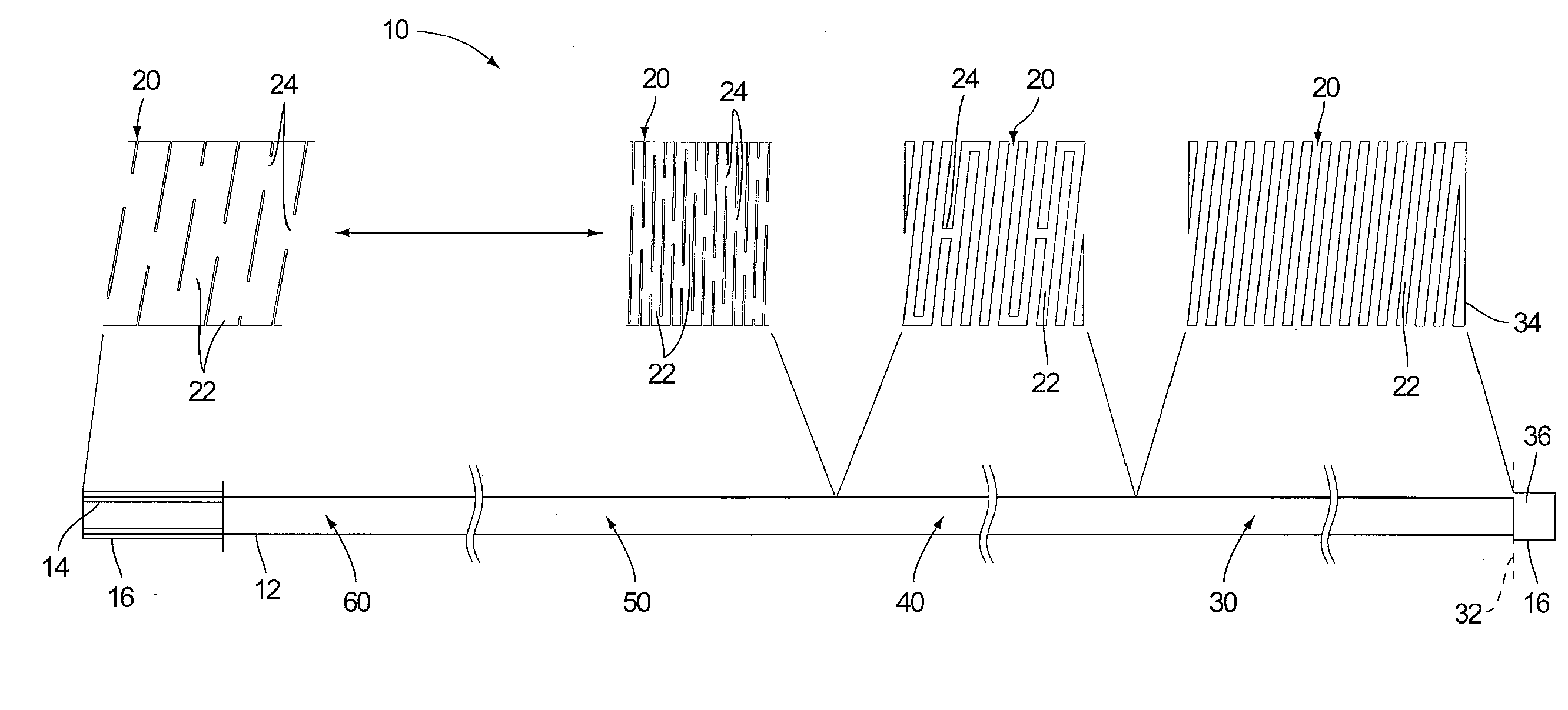Guide Catheters
a catheter and guide technology, applied in the field of catheters, can solve problems such as the limitation of performance possibilities of laminated construction
- Summary
- Abstract
- Description
- Claims
- Application Information
AI Technical Summary
Benefits of technology
Problems solved by technology
Method used
Image
Examples
Embodiment Construction
[0017]FIG. 1 illustrates details of the subject catheter. Catheter body 10 comprises a structural core 12, an inner liner 14 and an outer jacket 16. The core comprises a processed hypotube cut by conventional techniques to form slits 20 defining adjacent beams 22 and bridges 24 between the beams.
[0018]A distal extent 32 (indicated by broken line) of distal section 30 of the core typically terminates in a circumferential beam 34 at the end of the catheter indicated in broken line 34 where the liner 14 and jacket 16 are fused together to form an atraumatic tip 36.
[0019]A distinguishing feature of the present catheter is the manner in which the structural core extends substantially to the end of the device. Namely, it typically extends to within about 0.050 to about 0.1 inches of the end of the catheter. Only an optional “soft tip” structure (e.g., polymeric tip 36 or the like) extends beyond the structural core.
[0020]To allow requisite flexibility to provide for tracking in tortuous a...
PUM
 Login to View More
Login to View More Abstract
Description
Claims
Application Information
 Login to View More
Login to View More - R&D
- Intellectual Property
- Life Sciences
- Materials
- Tech Scout
- Unparalleled Data Quality
- Higher Quality Content
- 60% Fewer Hallucinations
Browse by: Latest US Patents, China's latest patents, Technical Efficacy Thesaurus, Application Domain, Technology Topic, Popular Technical Reports.
© 2025 PatSnap. All rights reserved.Legal|Privacy policy|Modern Slavery Act Transparency Statement|Sitemap|About US| Contact US: help@patsnap.com


